Fannie Mae 2010 Annual Report Download - page 14
Download and view the complete annual report
Please find page 14 of the 2010 Fannie Mae annual report below. You can navigate through the pages in the report by either clicking on the pages listed below, or by using the keyword search tool below to find specific information within the annual report.-
 1
1 -
 2
2 -
 3
3 -
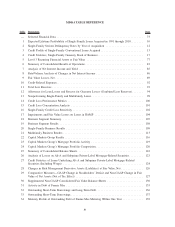 4
4 -
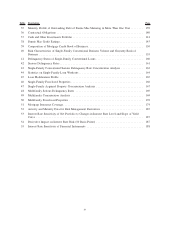 5
5 -
 6
6 -
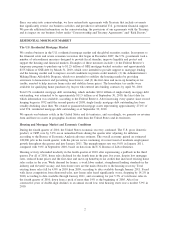 7
7 -
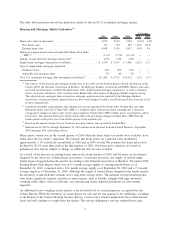 8
8 -
 9
9 -
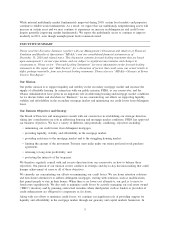 10
10 -
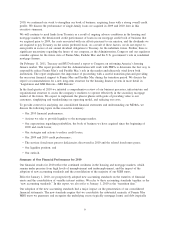 11
11 -
 12
12 -
 13
13 -
 14
14 -
 15
15 -
 16
16 -
 17
17 -
 18
18 -
 19
19 -
 20
20 -
 21
21 -
 22
22 -
 23
23 -
 24
24 -
 25
25 -
 26
26 -
 27
27 -
 28
28 -
 29
29 -
 30
30 -
 31
31 -
 32
32 -
 33
33 -
 34
34 -
 35
35 -
 36
36 -
 37
37 -
 38
38 -
 39
39 -
 40
40 -
 41
41 -
 42
42 -
 43
43 -
 44
44 -
 45
45 -
 46
46 -
 47
47 -
 48
48 -
 49
49 -
 50
50 -
 51
51 -
 52
52 -
 53
53 -
 54
54 -
 55
55 -
 56
56 -
 57
57 -
 58
58 -
 59
59 -
 60
60 -
 61
61 -
 62
62 -
 63
63 -
 64
64 -
 65
65 -
 66
66 -
 67
67 -
 68
68 -
 69
69 -
 70
70 -
 71
71 -
 72
72 -
 73
73 -
 74
74 -
 75
75 -
 76
76 -
 77
77 -
 78
78 -
 79
79 -
 80
80 -
 81
81 -
 82
82 -
 83
83 -
 84
84 -
 85
85 -
 86
86 -
 87
87 -
 88
88 -
 89
89 -
 90
90 -
 91
91 -
 92
92 -
 93
93 -
 94
94 -
 95
95 -
 96
96 -
 97
97 -
 98
98 -
 99
99 -
 100
100 -
 101
101 -
 102
102 -
 103
103 -
 104
104 -
 105
105 -
 106
106 -
 107
107 -
 108
108 -
 109
109 -
 110
110 -
 111
111 -
 112
112 -
 113
113 -
 114
114 -
 115
115 -
 116
116 -
 117
117 -
 118
118 -
 119
119 -
 120
120 -
 121
121 -
 122
122 -
 123
123 -
 124
124 -
 125
125 -
 126
126 -
 127
127 -
 128
128 -
 129
129 -
 130
130 -
 131
131 -
 132
132 -
 133
133 -
 134
134 -
 135
135 -
 136
136 -
 137
137 -
 138
138 -
 139
139 -
 140
140 -
 141
141 -
 142
142 -
 143
143 -
 144
144 -
 145
145 -
 146
146 -
 147
147 -
 148
148 -
 149
149 -
 150
150 -
 151
151 -
 152
152 -
 153
153 -
 154
154 -
 155
155 -
 156
156 -
 157
157 -
 158
158 -
 159
159 -
 160
160 -
 161
161 -
 162
162 -
 163
163 -
 164
164 -
 165
165 -
 166
166 -
 167
167 -
 168
168 -
 169
169 -
 170
170 -
 171
171 -
 172
172 -
 173
173 -
 174
174 -
 175
175 -
 176
176 -
 177
177 -
 178
178 -
 179
179 -
 180
180 -
 181
181 -
 182
182 -
 183
183 -
 184
184 -
 185
185 -
 186
186 -
 187
187 -
 188
188 -
 189
189 -
 190
190 -
 191
191 -
 192
192 -
 193
193 -
 194
194 -
 195
195 -
 196
196 -
 197
197 -
 198
198 -
 199
199 -
 200
200 -
 201
201 -
 202
202 -
 203
203 -
 204
204 -
 205
205 -
 206
206 -
 207
207 -
 208
208 -
 209
209 -
 210
210 -
 211
211 -
 212
212 -
 213
213 -
 214
214 -
 215
215 -
 216
216 -
 217
217 -
 218
218 -
 219
219 -
 220
220 -
 221
221 -
 222
222 -
 223
223 -
 224
224 -
 225
225 -
 226
226 -
 227
227 -
 228
228 -
 229
229 -
 230
230 -
 231
231 -
 232
232 -
 233
233 -
 234
234 -
 235
235 -
 236
236 -
 237
237 -
 238
238 -
 239
239 -
 240
240 -
 241
241 -
 242
242 -
 243
243 -
 244
244 -
 245
245 -
 246
246 -
 247
247 -
 248
248 -
 249
249 -
 250
250 -
 251
251 -
 252
252 -
 253
253 -
 254
254 -
 255
255 -
 256
256 -
 257
257 -
 258
258 -
 259
259 -
 260
260 -
 261
261 -
 262
262 -
 263
263 -
 264
264 -
 265
265 -
 266
266 -
 267
267 -
 268
268 -
 269
269 -
 270
270 -
 271
271 -
 272
272 -
 273
273 -
 274
274 -
 275
275 -
 276
276 -
 277
277 -
 278
278 -
 279
279 -
 280
280 -
 281
281 -
 282
282 -
 283
283 -
 284
284 -
 285
285 -
 286
286 -
 287
287 -
 288
288 -
 289
289 -
 290
290 -
 291
291 -
 292
292 -
 293
293 -
 294
294 -
 295
295 -
 296
296 -
 297
297 -
 298
298 -
 299
299 -
 300
300 -
 301
301 -
 302
302 -
 303
303 -
 304
304 -
 305
305 -
 306
306 -
 307
307 -
 308
308 -
 309
309 -
 310
310 -
 311
311 -
 312
312 -
 313
313 -
 314
314 -
 315
315 -
 316
316 -
 317
317 -
 318
318 -
 319
319 -
 320
320 -
 321
321 -
 322
322 -
 323
323 -
 324
324 -
 325
325 -
 326
326 -
 327
327 -
 328
328 -
 329
329 -
 330
330 -
 331
331 -
 332
332 -
 333
333 -
 334
334 -
 335
335 -
 336
336 -
 337
337 -
 338
338 -
 339
339 -
 340
340 -
 341
341 -
 342
342 -
 343
343 -
 344
344 -
 345
345 -
 346
346 -
 347
347 -
 348
348 -
 349
349 -
 350
350 -
 351
351 -
 352
352 -
 353
353 -
 354
354 -
 355
355 -
 356
356 -
 357
357 -
 358
358 -
 359
359 -
 360
360 -
 361
361 -
 362
362 -
 363
363 -
 364
364 -
 365
365 -
 366
366 -
 367
367 -
 368
368 -
 369
369 -
 370
370 -
 371
371 -
 372
372 -
 373
373 -
 374
374 -
 375
375 -
 376
376 -
 377
377 -
 378
378 -
 379
379 -
 380
380 -
 381
381 -
 382
382 -
 383
383 -
 384
384 -
 385
385 -
 386
386 -
 387
387 -
 388
388 -
 389
389 -
 390
390 -
 391
391 -
 392
392 -
 393
393 -
 394
394 -
 395
395 -
 396
396 -
 397
397 -
 398
398 -
 399
399 -
 400
400 -
 401
401 -
 402
402 -
 403
403
 |
 |
single-family mortgage-related securities of 49.0% during the fourth quarter of 2010 and 44.0% for the full
year. In comparison, our estimated market share of new single-family mortgage-related securities issuances
was 44.5% in the third quarter of 2010 and 38.9% in the fourth quarter of 2009. If the Federal Housing
Administration (“FHA”) continues to be the lower-cost option for some consumers, and in some cases the only
option, for loans with higher loan-to-value (“LTV”) ratios, our market share could be adversely impacted if the
market shifts away from refinance activity, which is likely to occur when interest rates rise. In the multifamily
market, we remain a constant source of liquidity, guaranteeing an estimated 20.1% of multifamily mortgage
debt outstanding as of September 30, 2010, the latest date for which the Federal Reserve has estimated
mortgage debt outstanding for multifamily residences.
Our Expectations Regarding Profitability, the Single-Family Loans We Acquired Beginning in 2009, and
Credit Losses
In this section we discuss our expectations regarding the profitability, performance and credit profile of the
single-family loans we have purchased or guaranteed since the beginning of 2009, shortly after entering into
conservatorship in late 2008, and our expected single-family credit losses. We refer to loans we have
purchased or guaranteed as loans that we have “acquired.”
• Since the beginning of 2009, we have acquired single-family loans that have a strong overall credit profile
and are performing well. We expect these loans will be profitable, by which we mean they will generate
more fee income than credit losses and administrative costs, as we discuss in “Expected Profitability of
Our Single-Family Acquisitions” below. For further information, see “Table 2: Single-Family Serious
Delinquency Rates by Year of Acquisition” and “Table 3: Credit Profile of Single-Family Conventional
Loans Acquired.”
• The vast majority of our realized credit losses in 2009 and 2010 on single-family loans are attributable to
single-family loans that we purchased or guaranteed from 2005 through 2008. While these loans will give
rise to additional credit losses that we have not yet realized, we estimate that we have reserved for the
substantial majority of the remaining losses.
Factors that Could Cause Actual Results to be Materially Different from Our Estimates and Expectations
In this discussion, we present a number of estimates and expectations regarding the profitability of single-
family loans we have acquired, our single-family credit losses, and our draws from and dividends to be paid to
Treasury. These estimates and expectations are forward-looking statements based on our current assumptions
regarding numerous factors, including future home prices and the future performance of our loans. Our future
estimates of these amounts, as well as the actual amounts, may differ materially from our current estimates
and expectations as a result of home price changes, changes in interest rates, unemployment, direct and
indirect consequences resulting from failures by servicers to follow proper procedures in the administration of
foreclosure cases, government policy, changes in generally accepted accounting principles (“GAAP”), credit
availability, social behaviors, other macro-economic variables, the volume of loans we modify, the
effectiveness of our loss mitigation strategies, management of our REO inventory and pursuit of contractual
remedies, changes in the fair value of our assets and liabilities, impairments of our assets, or many other
factors, including those discussed in “Risk Factors” and “MD&A — Forward-Looking Statements.” For
example, if the economy were to enter a deep recession during this time period, we would expect actual
outcomes to differ substantially from our current expectations.
Expected Profitability of Our Single-Family Acquisitions
While it is too early to know how loans we have acquired since January 1, 2009 will ultimately perform,
given their strong credit risk profile, low levels of payment delinquencies shortly after their acquisition, and
low serious delinquency rate, we expect that, over their lifecycle, these loans will be profitable. Table 1
provides information about whether we expect loans we acquired in 1991 through 2010 to be profitable, and
the percentage of our single-family guaranty book of business represented by these loans as of December 31,
2010. The expectations reflected in Table 1 are based on the credit risk profile of the loans we have acquired,
9
